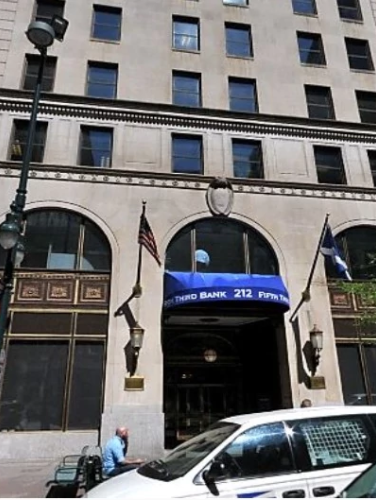
Johnston Building
(ca. 1924)
Once Charlotte’s tallest building, the Johnston Building housed the various business interests of Charles Worth Johnston, one of the city’s most prominent textile industrialists.
212 S. Tryon St., Charlotte, NC 28202
Charles Worth Johnston (1861-1941) was a busy man. In 1924, the year the fifteen-story Johnston Building was completed, he was the president of four companies (Johnston Mills Company, M & F Bonded Warehouse Company, Highland Park Manufacturing Company, and Johnston Manufacturing Company) and the vice-president of Commercial National Bank. The following year, he added at least two other executive positions – with Eastern Manufacturing Company and Monroe Mills Company – to his burgeoning resume. Small wonder he commissioned construction of the tallest building in Charlotte to house those various operations, as well as the addition of two more floors to the building before the end of the 1920s. Now known as Midtown Plaza, the building’s various tenants continue to engage in a wide range of commercial activities.
Property Quick Links
A Cabarrus County native, Johnston moved to Mecklenburg County to attend Davidson College and started his professional career with the Stough-Cornelius Company, and soon thereafter became the superintendent of the company’s Cornelius Mills. He moved to Charlotte in 1892 to become Secretary of the Highland Park Manufacturing Company; by 1911, he was president of the company. Several other cotton mills followed. Honored at the time of his death as a "Titan among textile industrialists," Johnston built a multifaceted family business that survived him for two generations.
Although surpassed in both height and square footage less than two years after its completion (by the nearby First National Bank building), the Johnston Building was long considered the epitome of style and elegance. That can be attributed in part to the architect Johnson selected, William Lee Stoddart (1869-1940). The prolific New York City based architect was an acclaimed designer of large urban hotels and his multistate practice popularized the Beaux Arts style in the early twentieth century. He designed several well-known buildings across North Carolina, including Hotel Charlotte (once located at West Trade and South Poplar Streets), Greensboro’s O. Henry Hotel, Raleigh’s Sir Walter Hotel, Winston-Salem’s Nissen Building, and Asheville’s Battery Park Hotel (earning Thomas Wolfe’s critique in Look Homeward, Angel as the work of “some gigantic biscuit-cutter”). Other early tenants in the Johnston Building included the E. C. Griffith Company (developers of the Eastover neighborhood), locally renowned architect Charles Christian Hook, former North Carolina governor Cameron Morrison, and Southern Bell Telephone and Telegraph Company.

